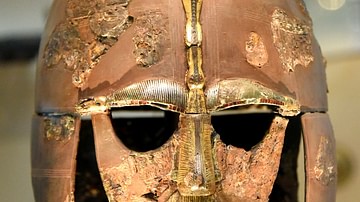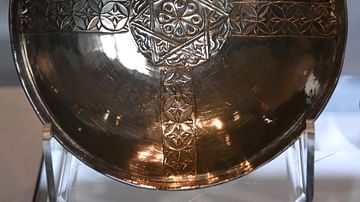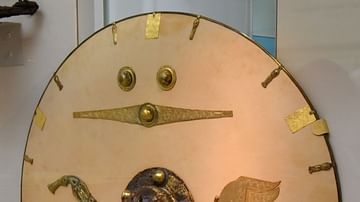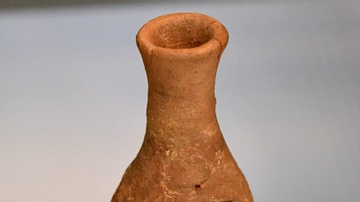Illustration
This Byzantine silver platter is one of the largest to survive from the Byzantine Period. It measures almost 72 centimeters across and weighs 6.5 kilograms. The back is stamped with the control marks of Emperor Anastasius I, who reigned in Constantinople, the capital of the Byzantine Empire from 491-518 CE. This means that the platter was already around 100 years old when it was buried. Large silver platters formed the centerpiece of dining parties in the Byzantine Empire. After arriving in Anglo-Saxon England, this one's size and exotic origin would have transmitted powerful messages about its owner status. Donated by Mrs. Edith M. Pretty. 491-518 CE. From the ship-burial mound 1 at Sutton Hoo, Suffolk, England, UK. (The British Museum, London).
About the Author
Cite This Work
APA Style
Amin, O. S. M. (2016, October 07). Detail of Sutton Hoo's Anastasius Platter. World History Encyclopedia. Retrieved from https://www.worldhistory.org/image/5776/detail-of-sutton-hoos-anastasius-platter/
Chicago Style
Amin, Osama Shukir Muhammed. "Detail of Sutton Hoo's Anastasius Platter." World History Encyclopedia. Last modified October 07, 2016. https://www.worldhistory.org/image/5776/detail-of-sutton-hoos-anastasius-platter/.
MLA Style
Amin, Osama Shukir Muhammed. "Detail of Sutton Hoo's Anastasius Platter." World History Encyclopedia. World History Encyclopedia, 07 Oct 2016, https://www.worldhistory.org/image/5776/detail-of-sutton-hoos-anastasius-platter/. Web. 16 Apr 2025.








